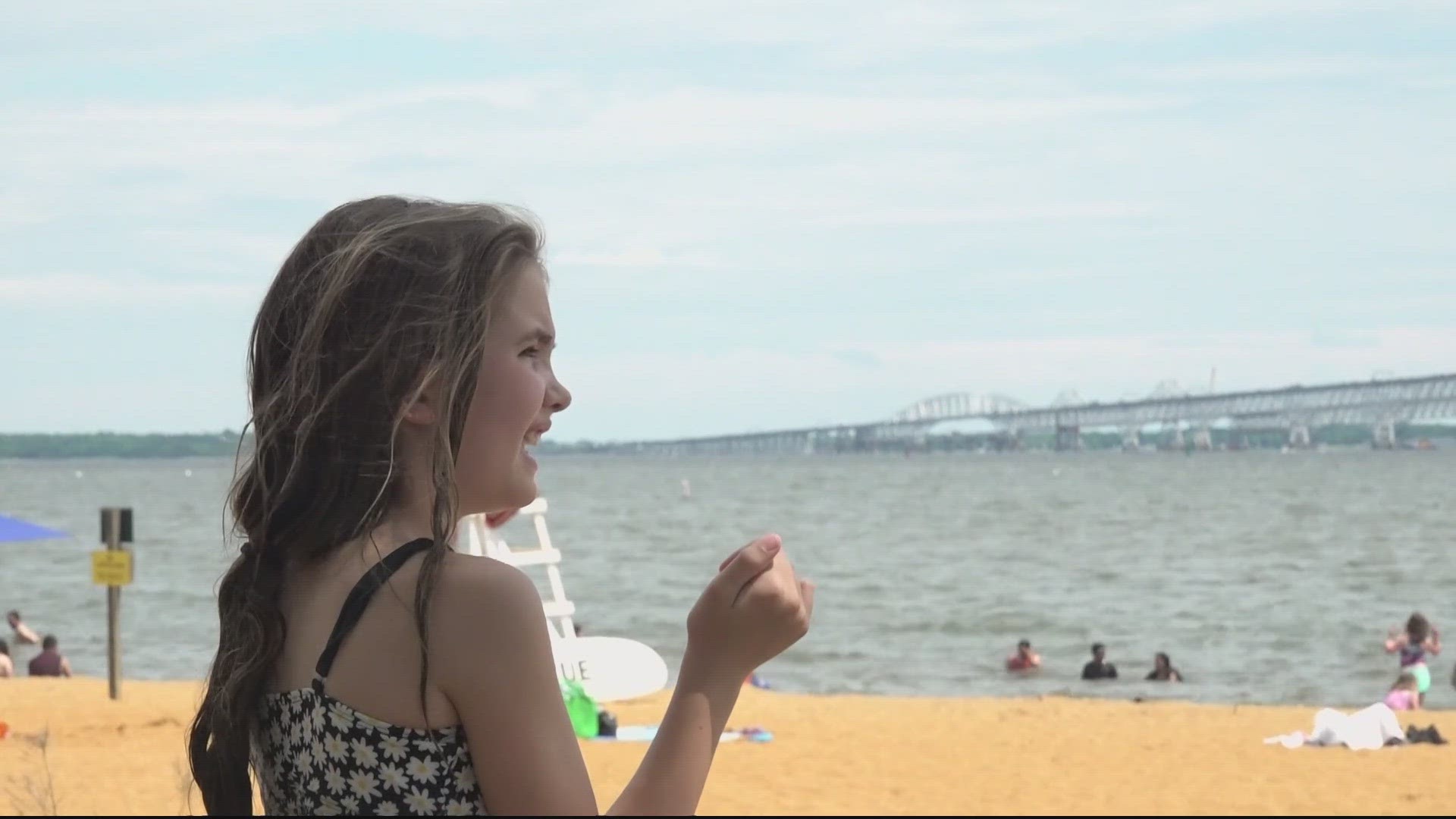MARYLAND, USA — With temperatures rising, more and more people are heading to the beach for some fun in the sun, but how safe are our favorite spots? According to an Environment America report, some of Maryland's waters might not be as safe as some would hope.
In 2022, 55% of the 3,192 tested beaches across the U.S. experienced at least one day on which fecal contamination reached potentially unsafe levels – that is, exceeding EPA’s most protective “Beach Action Value.” This is a precautionary tool that states can use to make beach notification decisions.
And 363 beaches – which is around one out of every nine beaches tested – had potentially unsafe levels of fecal contamination on at least 25% of the days on which testing took place.
John Rumpler of Environment America says at the beach action value is associated with, "thirty-two out of a thousand swimmers getting sick because of the likely level of pathogens in the water."
In Maryland, there were 65 beaches tested for fecal indicator bacteria last year. On at least one testing day, of those beaches, 41 or 63% of them showed potentially unsafe levels of fecal indicator bacteria. Eleven or 17% of the tested beaches showed potentially unsafe levels on more than 25% of all days tested.
Here are the Maryland beaches that had the most potentially unsafe days in 2022:
- Elk Neck State Park North East River in Cecil County; 54% of potentially unsafe test days
- Ferry Park in Kent County; 55% of potentially unsafe test days
- Flag Ponds in Calvert County; 40% of potentially unsafe test days
- Cape St. Claire at Persimmon Point in Anne Arundel County; 33% of potentially unsafe test days
- Tolchester Estates Beach in Kent County; 33% of potentially unsafe test days
- Flag Harbor in Calvert County; 30% of potentially unsafe test days
- Tolchester Marina and Beach in Kent County; 30% of potentially unsafe test days
- North Point State Park in Baltimore County; 27% of potentially unsafe test days
- Breezy Point in Calvert County; 18% of potentially unsafe test days
- Mayo Beach Park in Anne Arundel; 17% of potentially unsafe test days
In Virginia, 48 beaches around the mouth of the Chesapeake were tested for fecal indicator bacteria, 21 of them showed potentially unsafe levels on at least one testing day, and two showed unsafe levels on at least a quarter of the testing days.
"It’s just crazy that we literally have untreated poopy water flowing into the Chesapeake Bay watershed here in the 21st Century in the United States of America," said Rumpler.
You can find current beach advisories and closures on the website of the Maryland Department of the Environment. There's more information on beach water quality at the EPA’s Beach Advisory and Closing On-line Notification (BEACON) website.

